Celebrating National Piano Month, Part Three
«As September and National Piano Month come to an end, the Department of Musical Instruments wraps up its series of posts highlighting some of the most important pianos from The Metropolitan Museum of Art—home to one of the most comprehensive collections of historic pianos to be found anywhere in the world. After showcasing the work of Erard & Co., Joseph Böhm, Conrad Graf, Nunns & Clark, Johann Schmidt, and Carl Bechstein in previous installments, the celebration finishes with five final examples of pianos from the Museum's collection—including the oldest extant piano in the world.»
Steinway & Sons Grand Piano
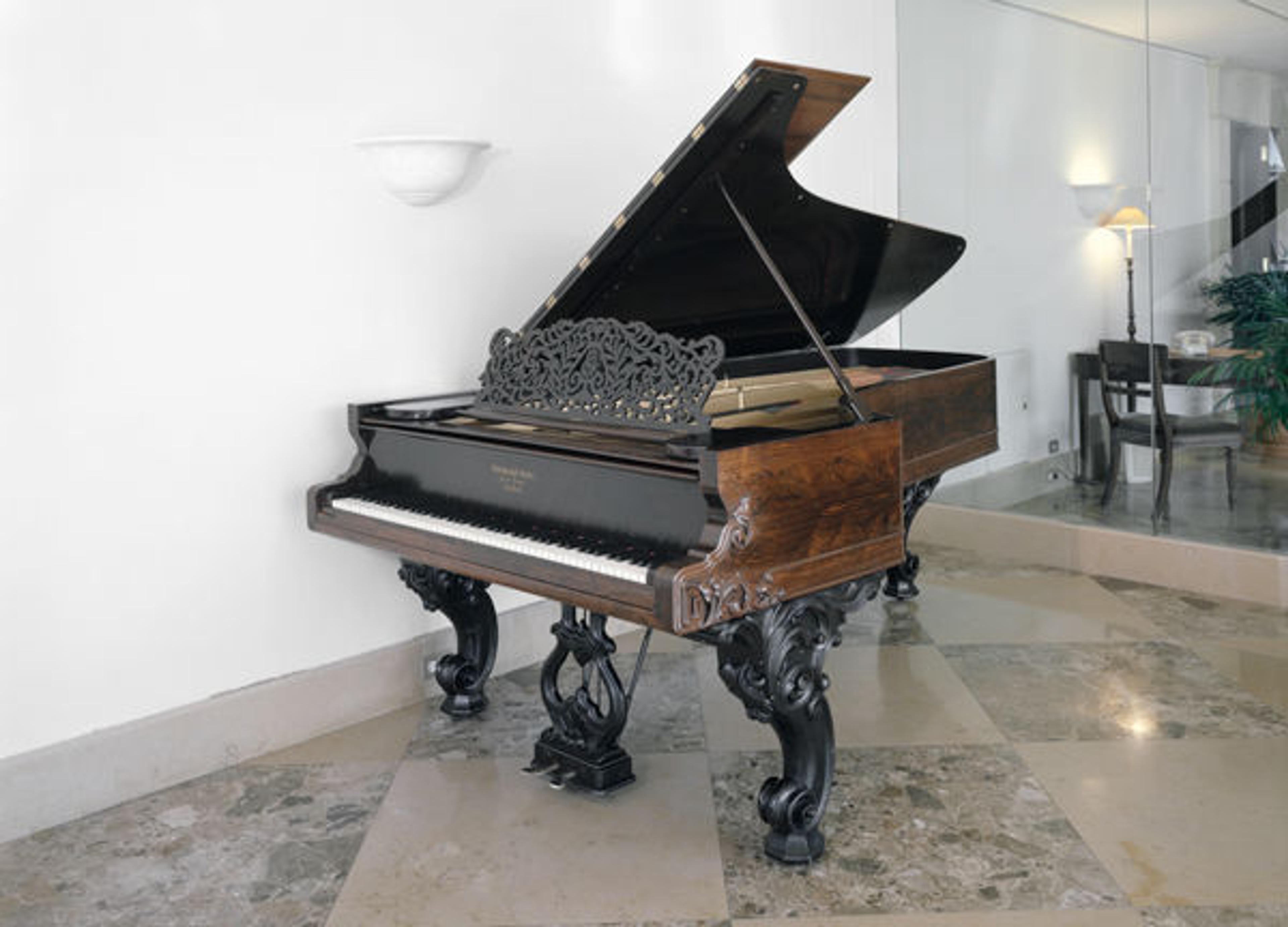
Grand piano, 1868. Steinway & Sons, New York, New York, United States. Wood, metal. The Metropolitan Museum of Art, New York, Gift of Frederick R. Gorreé, 1985 (1985.407)
The piano manufacturer most associated with New York City, Steinway & Sons began producing pianos in Manhattan in 1853 before moving their operations to the Astoria neighborhood of Queens. The Steinway company collaborated with the founder of the Met's collection of musical instruments, Mary Elizabeth Brown, to create models of piano mechanisms that were exhibited alongside the Museum's instruments in the early twentieth century.
Fact: The Museum's Steinway grand piano is a "Style 2" model, built in 1868. This model was the first from the Steinway company to have the now-standard eighty-eight keys.
John Broadwood & Sons Grand Piano
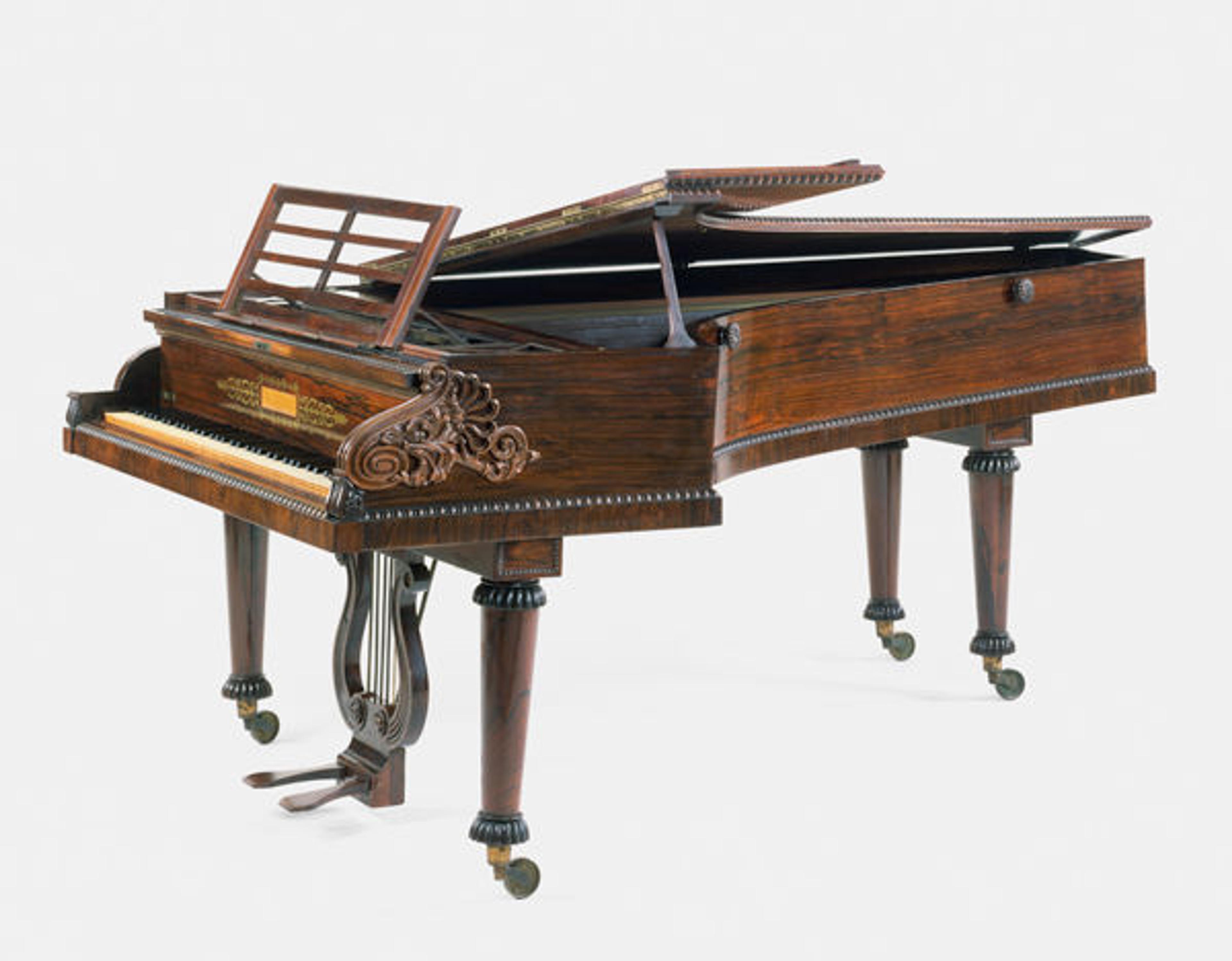
Grand piano, 1827. John Broadwood & Sons, London, England, United Kingdom. Wood, various materials. The Metropolitan Museum of Art, New York, Gift of Professor Stoddard Lincoln, 1972 (1972.109)
This piano, veneered in Brazilian rosewood, has a six-and-a-half-octave compass (CC–f4). The two pedals raise the dampers and provide an "una corda" shift. By adjusting a slide on the right key block, the "una corda" pedal can shift the action incrementally so that the hammers strike either one or two strings, rather than the usual three.
Fact: John Broadwood & Sons was the most important English piano maker in the early nineteenth century and annually produced around 1,500 instruments throughout the 1820s.
<p>Please enable flash to view this media. <a href="http://get.adobe.com/flashplayer/">Download the flash player.</a></p>
Alexander Reinagle (American, 1756–1809). Sonata No. 1 in D Major. Jack Winerock, performing on the Broadwood grand piano. From Alexander Reinagle: Three Keyboard Sonatas, The Musical Heritage Society, 1972.
Ferdinand Hofmann Pianoforte
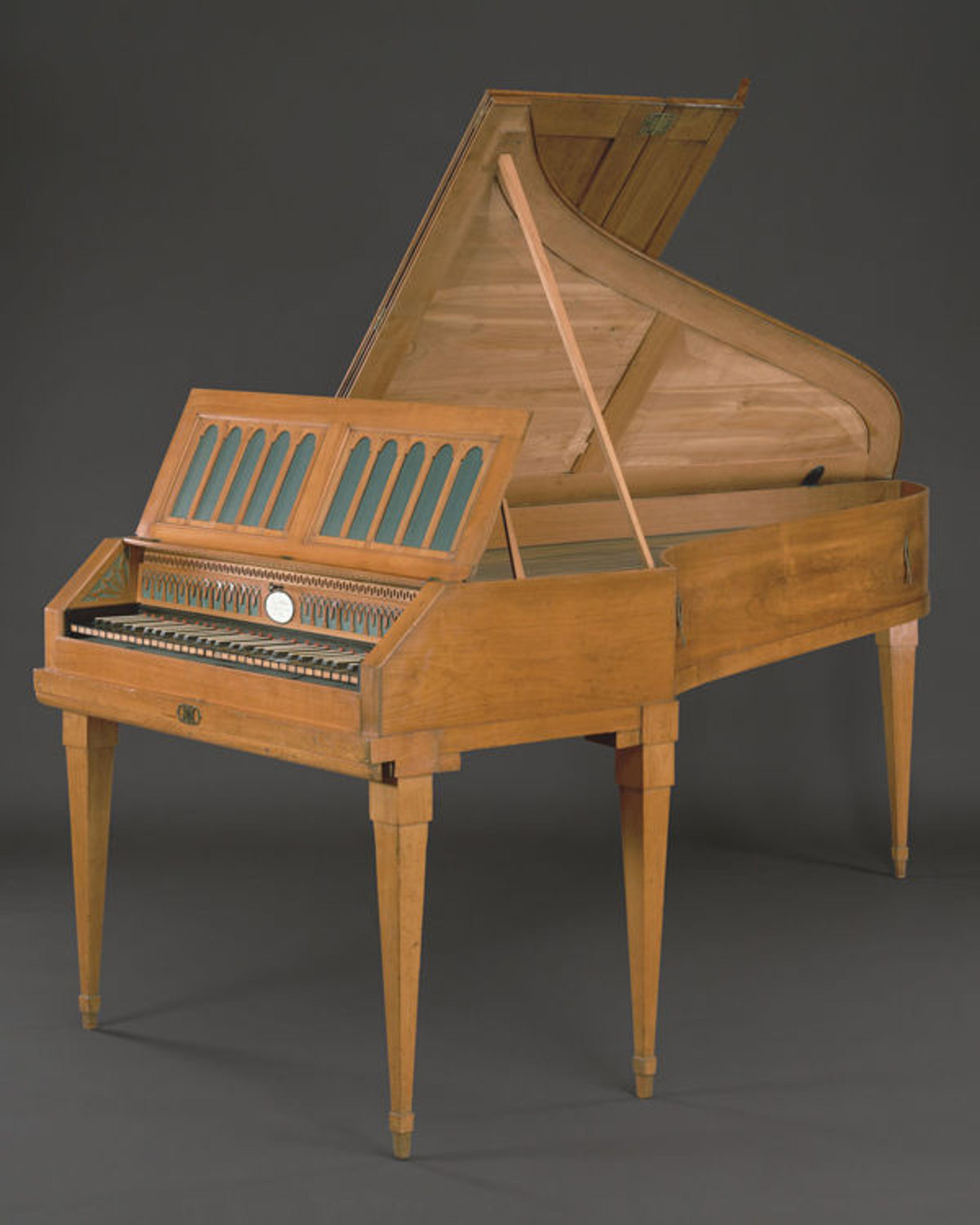
Ferdinand Hofmann (Austrian, 1756–1829). Grand piano, ca. 1790. Cherry wood, various other materials. The Metropolitan Museum of Art, New York, Gift of Geraldine C. Herzfeld, in memory of her husband, Monroe Eliot Hemmerdinger, 1984 (1984.34)
This beautiful piano has a five-octave range that was typical of the late eighteenth century pianos available to composers such as Mozart and Haydn. Learn more about this piano and watch a video of Michael Tsalka performing a Mozart gigue on this instrument in the Heilbrunn Timeline of Art History.
Fact: Hofmann served as president of the civic keyboard association in Vienna starting in 1806.
Ferdinand Weber Square Piano
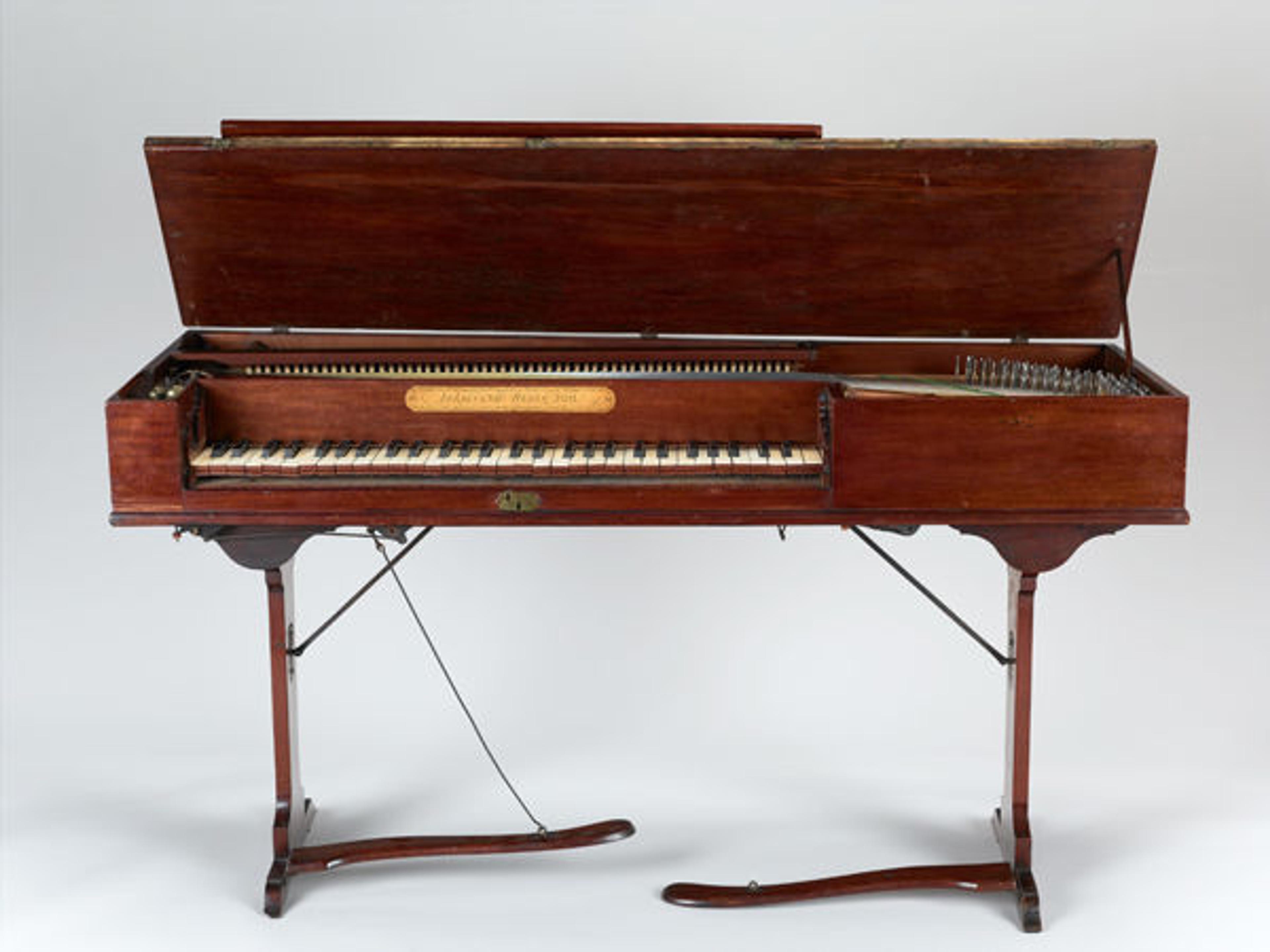
Ferdinand Weber (German, 1715–1784). Square piano, 1772. Mahogany, iron, brass, ivory, ebony, various materials. The Metropolitan Museum of Art, New York, Bequest of Murtogh D. Guinness, 2003 (2003.300)
This instrument also has two sets of hammers—one set that is harder, and one with buff leather heads. A pedal allows the player to switch between the loud- and soft-sounding hammers.
Fact: This square piano has collapsible legs that make it easy to transport.
Bartolomeo Cristofori Pianoforte
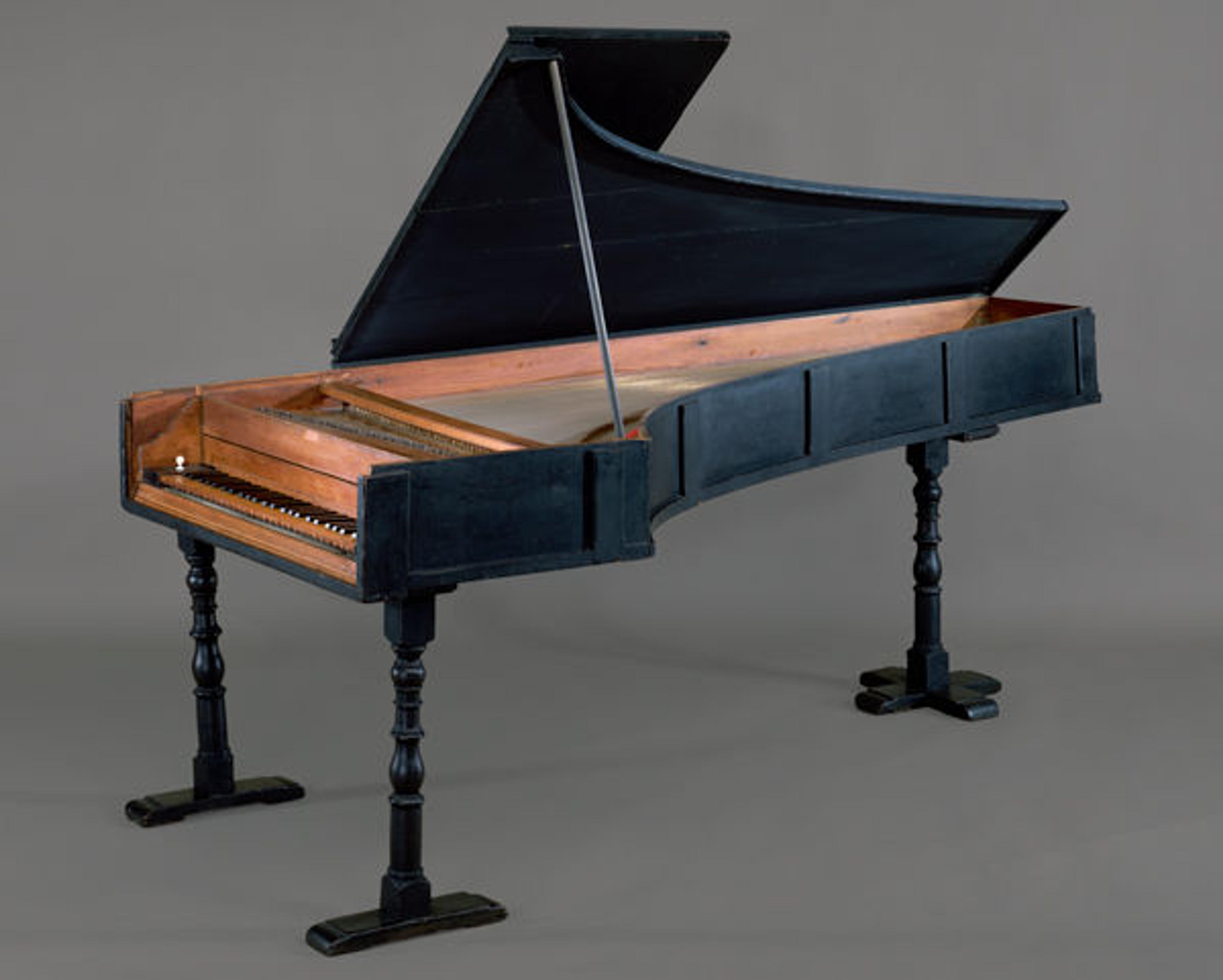
Bartolomeo Cristofori (Italian, 1655–1731). Grand piano, 1720. Various materials. The Metropolitan Museum of Art, New York, The Crosby Brown Collection of Musical Instruments, 1889 (89.4.1219)
Bartolomeo Cristofori invented the hammer-action-mechanism keyboard instrument around the year 1700. The Museum's instrument is the oldest of three pianos by Cristofori that survive. Learn more about this celebrated piano and hear recordings of the instrument being performed in the Heilbrunn Timeline of Art History.
Fact: The Met's Cristofori example is the oldest extant piano in the world.
Follow Jayson on Twitter: @JayKerrDobney
Related Link
Of Note: Posts related to National Piano Month
Jayson Dobney
Jayson Dobney is the Frederick P. Rose Curator in Charge in the Department of Musical Instruments.
Follow Jayson on Twitter: @JayKerrDobney